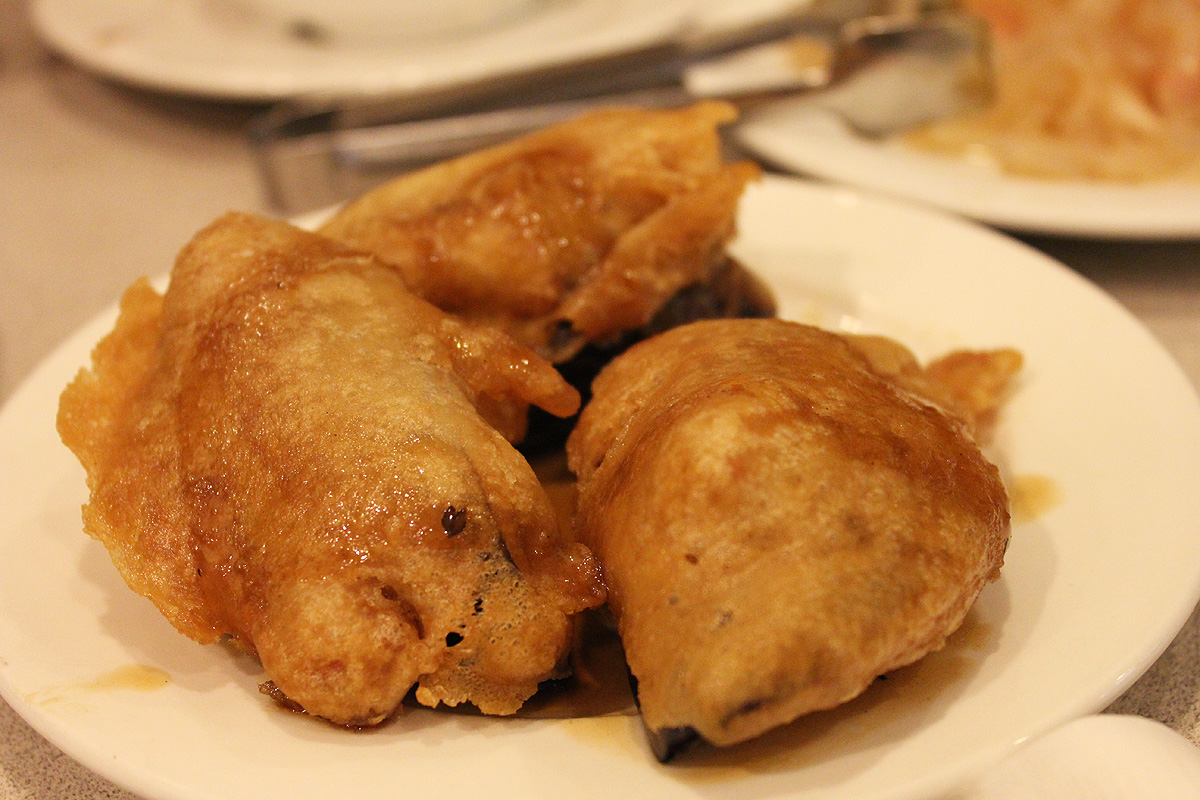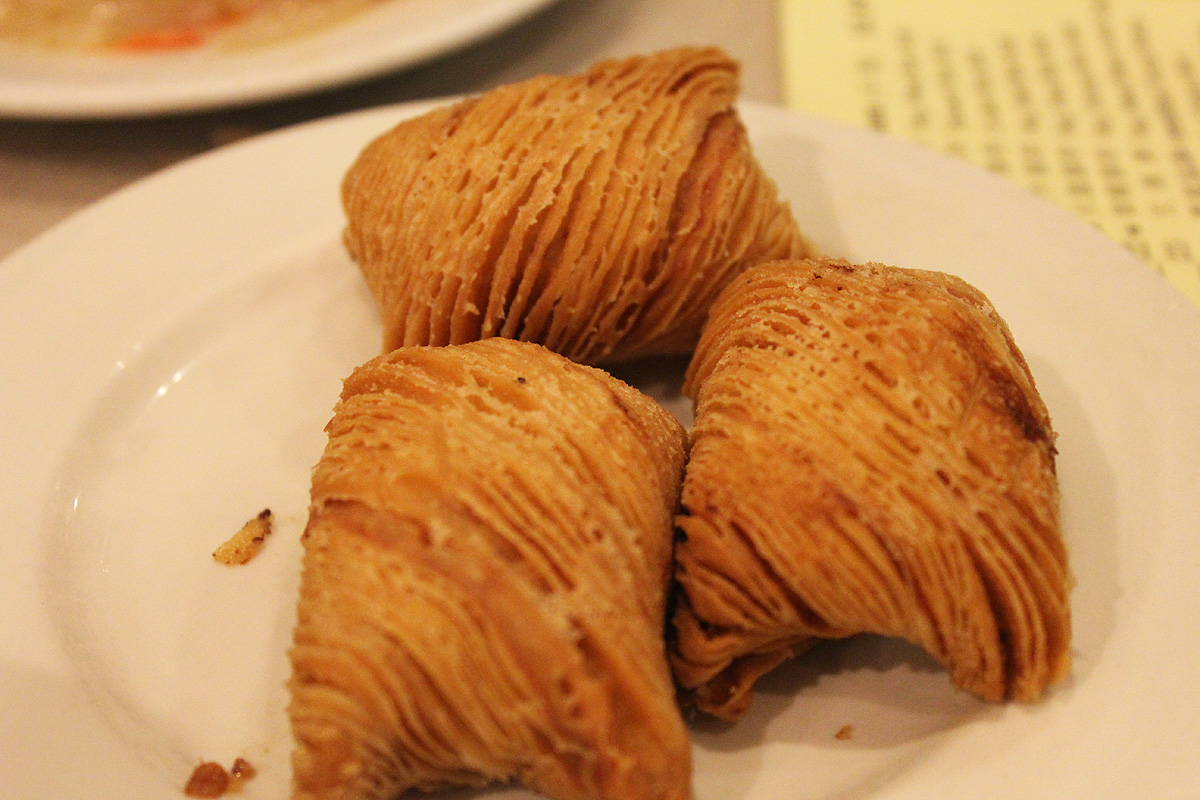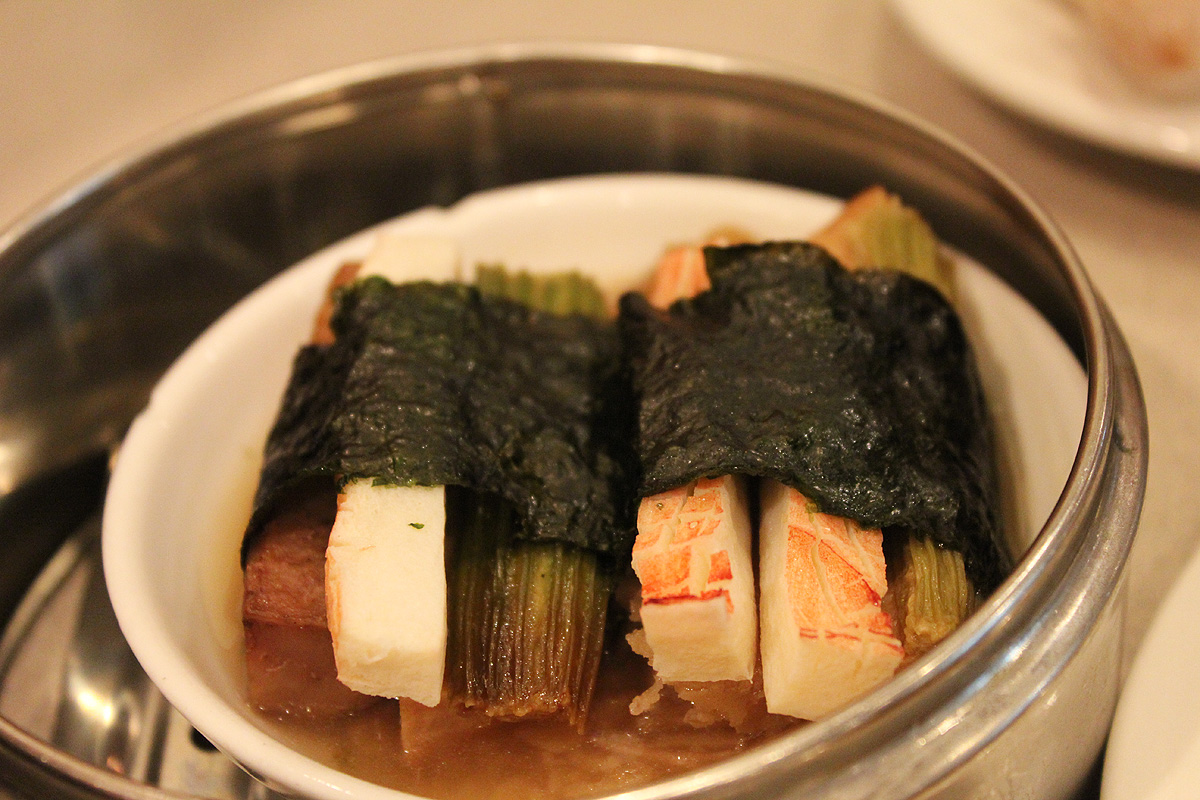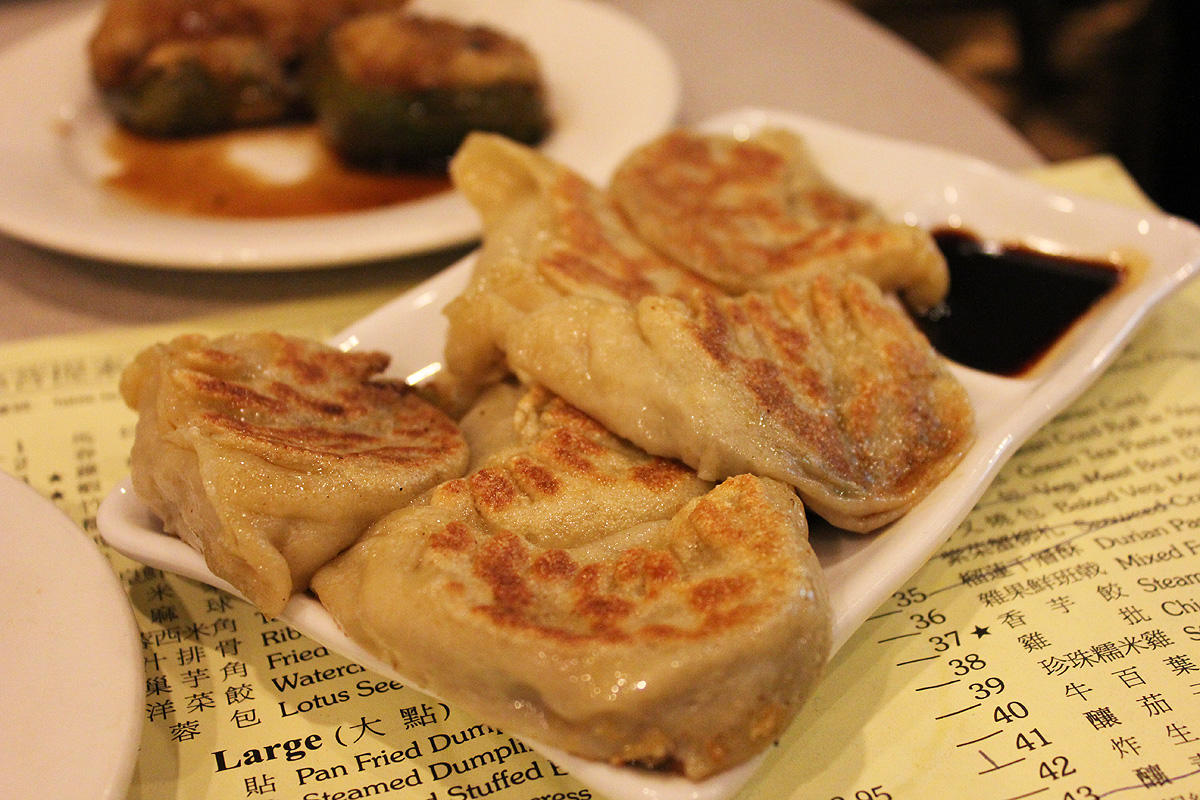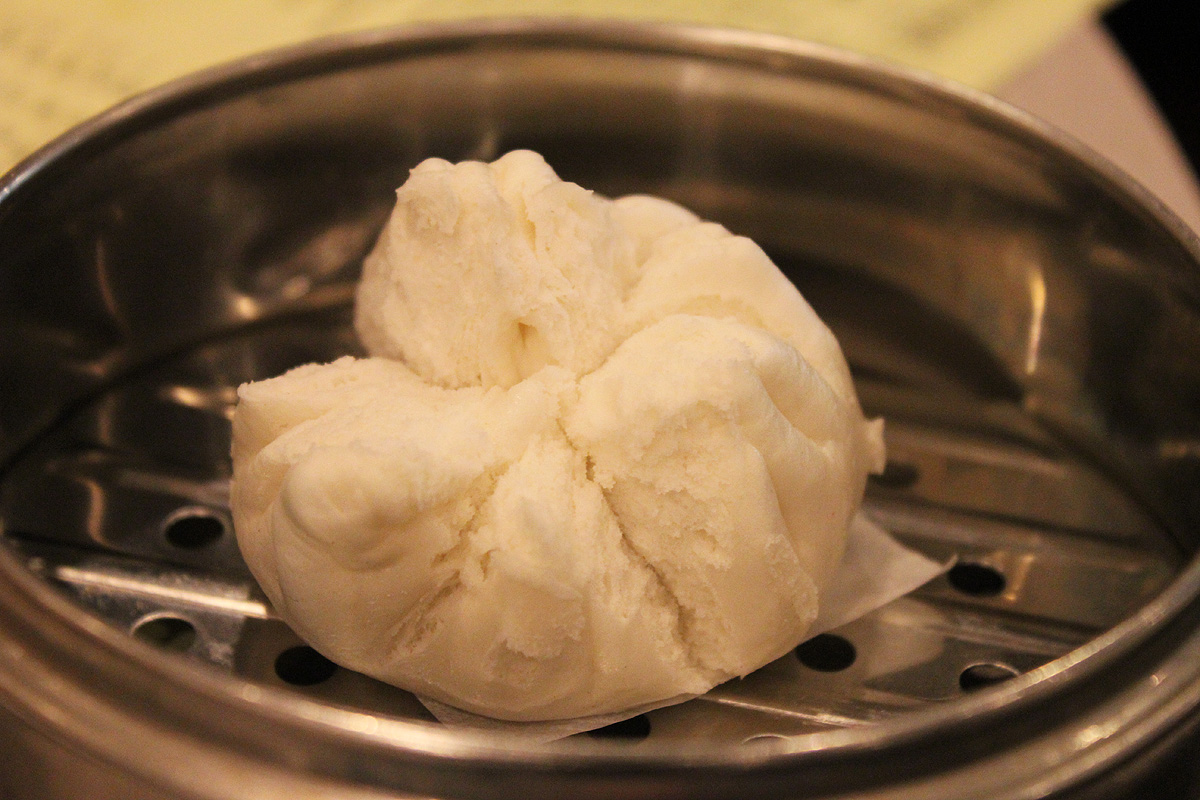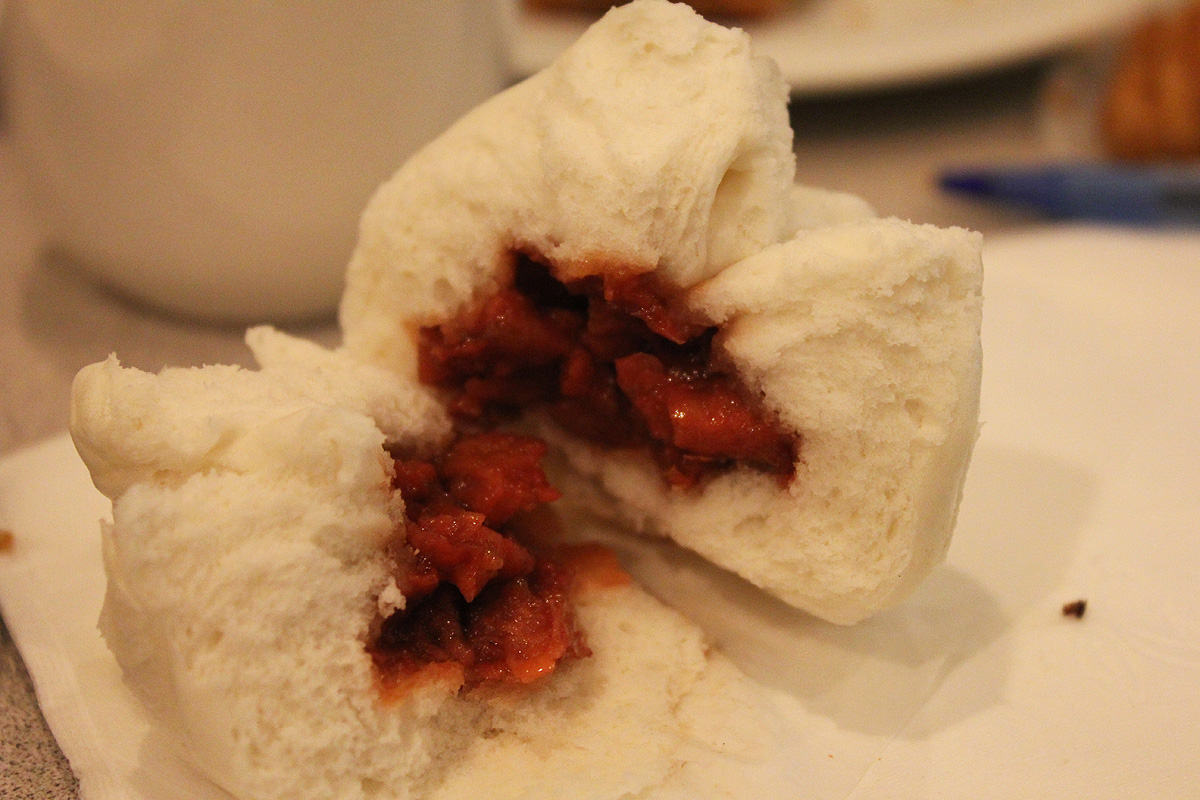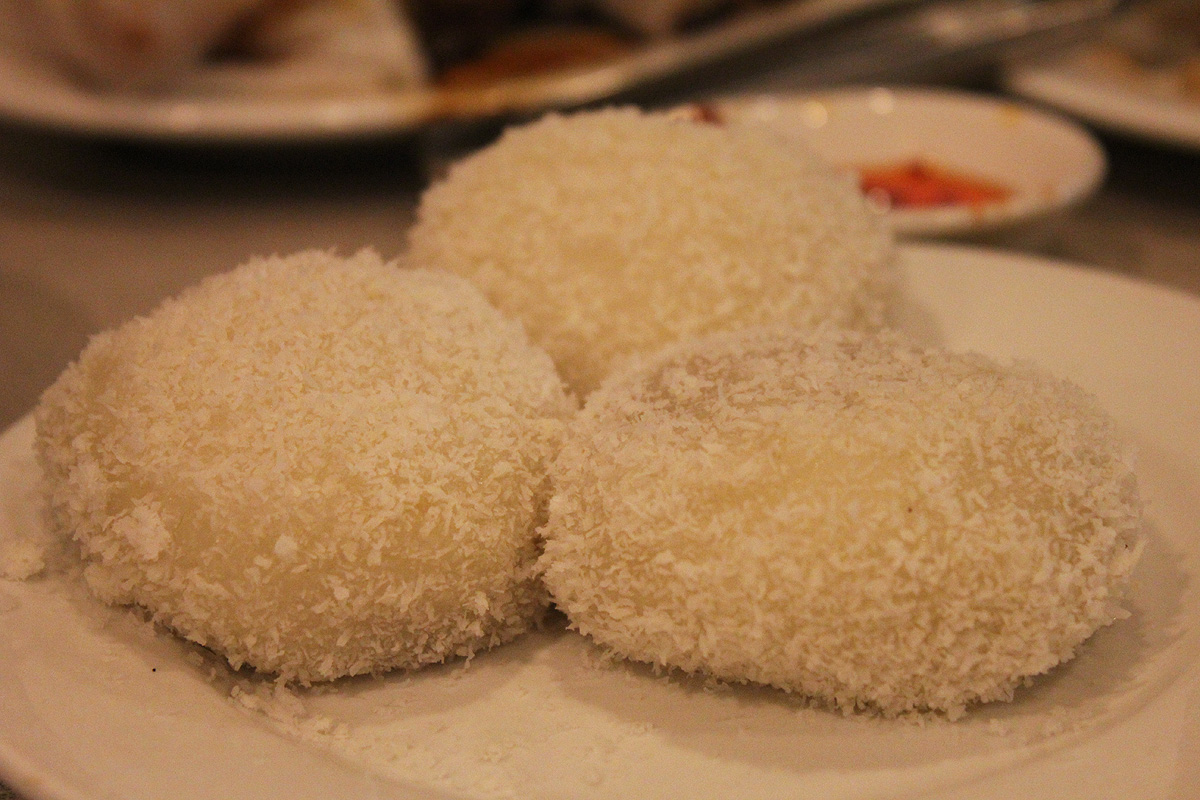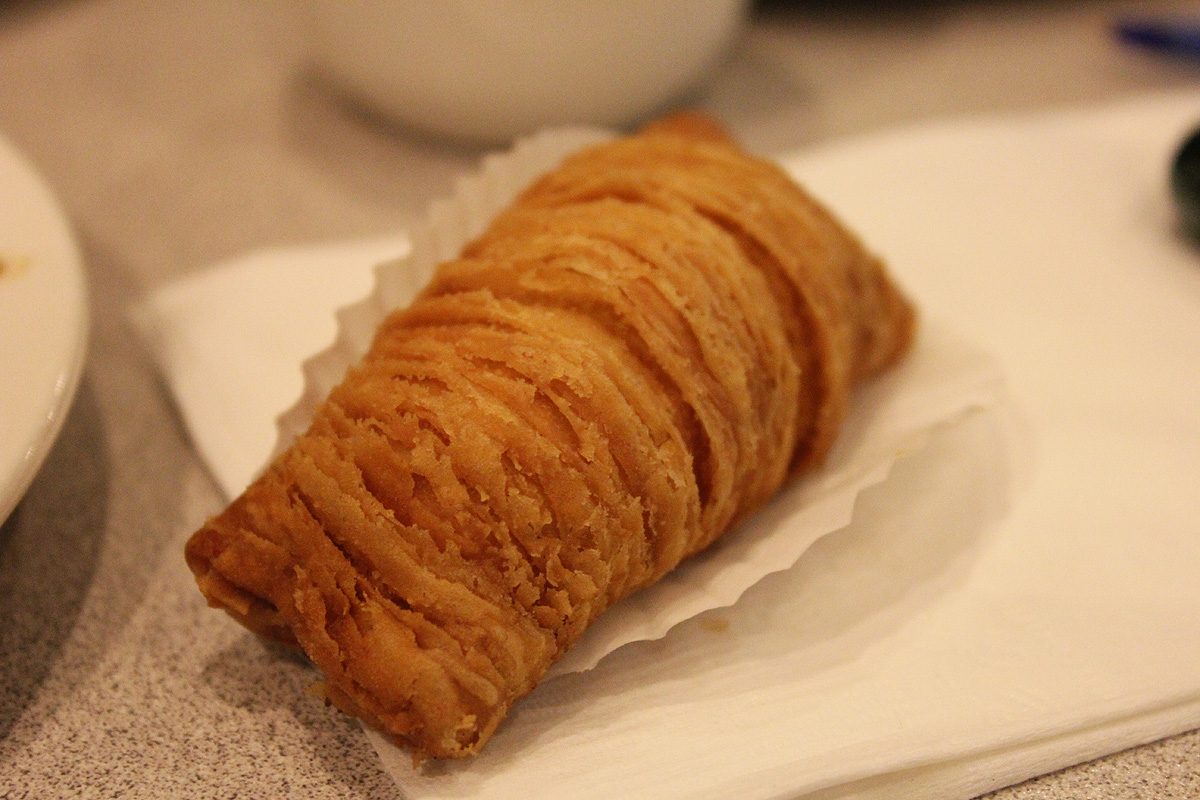Vegetarian dim sum. Yes, you read that right. Definitely not something you come across very often. I mean, there are definitely a small number of vegetarian options when you get dim sum, but for a restaurant to have an entirely vegetarian menu including all-vegetarian dim sum? A rather rare breed. But I found this at Buddha Bodai.
Having grown up in a Chinese family in the Bay Area of California, going to yum cha (literally “taste tea”) – which is when you would have dim sum – was fairly common. I have fond memories of sitting in crowded restaurants on a weekend late morning/early afternoon with my family and usually some extended family members, seeing and hearing what were usually ladies pushing carts by each table, calling out what kind of dim sum might be on those carts. My dad would stop the lady and ask for one or two round trays of whatever he thought we needed. The lady would use tongs to place them onto our table, place a stamp on the card that would tally up the price at the end, and move on to the next table.
Back when I wasn’t vegetarian, I had many favorites: cha siu bao (barbecue pork bun), har gow (shrimp dumpling), wu gok (taro dumpling), cheong fun (rice noodle roll, either with beef or shrimp), and sweets like daan taat (egg custard tart) and nai wong bao (sweet custard bun). Now that I only sometimes eat seafood, I usually am limited to just the shrimp-only dishes and the sweets.
So, to find a restaurant where I could potentially eat more than just a few things offered, it was very exciting. I found Buddha Bodai on Yelp when searching for vegetarian and dim sum. The reviews were mostly fairly good. My friends said they were game. So, last Saturday, we met up in Chinatown in lower Manhattan and gave it a try.
I’d been to some all-vegetarian (Chinese or other Asian) restaurants in California, a couple that offered “fake meat” replacements made out of textured soy protein or wheat protein, processed into something resembling a meat texture. Sometimes it was pretty darn close (“pork” spareribs and “chicken”, if I recall correctly). Other times, not even close (usually “beef”). So, I was curious how Buddha Bodai would handle it.
Buddha Bodai is located at 5 Mott Street (and Chatham Square) in Chinatown in Manhattan.
I was running late, so my friends ordered a handful of items off the dim sum menu. This place didn’t have the carts that you picked things from. Instead, things were cooked to order, which I suppose is more economical since it’s hard to predict how much of each dish to make ahead of time. When I arrived, there was already Two-Mushroom Congee (rice porridge or jook) on the table, vegetarian “shrimp” rice roll (har cheong fun), and what I assume to be vegetarian “jelly fish”.
Luckily, I’d be fine with eating real jelly fish if offered to me as did one of my friends who is also vegetarian, so none of us questioned the waiter about what the “jelly fish” really was. It tasted pretty darn close to the traditional jelly fish. The only thing that made us doubt that it was real was the fact that the texture – while chewy – didn’t quite have that slight crunchiness you’d find in the real thing. It was a little softer. It was still good.
The vegetarian “shrimp” rice roll (of which I did not get a good photo) was really just egg trying, but not succeeding, to masquerade as shrimp. As my friends and I would come to agree upon later, I thought, “Why not just call yourself ‘egg rice roll’ and stop trying to fool anybody?” But I guess the point of this restaurant was that it was trying to mimic the real stuff. Fair enough. It was still very tasty and my favorite part of cheong fun anyway is the soy sauce that is slightly sweeter than your usual soy sauce.
Then a barrage of dishes came out in fairly quick succession.
Next was the fried eggplant stuffed with vegetarian meat.
I don’t know if this was trying to mimic another traditional dish (I don’t think so). This was quite greasy as there was quite a bit of batter on top of the eggplant, and eggplant is like a sponge and will absorb huge amounts of oil. It was tasty, but primarily because of the oil. Fat makes anything taste good, really. And I didn’t even know there was supposed to be vegetarian “meat” stuffed in the eggplant until I looked at the menu. Perhaps my piece somehow lost the vegetarian “meat” that was supposed to be inside.
Then, more cheong fun, this time the cruller rice roll.
My family knew the fried dough that is called a “cruller” here as “Chinese doughnut” or yau za gui (which literally translates to “oil-fried devil or ghost”). It’s essentially just deep-fried dough and it’s slightly salty. I don’t think I’d ever had it inside the rice noodle roll before, though, even though I’d seen the strange combination. It wasn’t anything terribly impressive. Rice noodle and fried dough and soy sauce. I think I prefer the fried dough by itself or in jook and have other ingredients in the rice noodle roll (like shrimp).
Then came the shredded turnip pastry, which was this restaurant’s version of lo bak gow.
If I remember correctly, traditional lo bak gow that I was used to has dried shrimp in it, and it wasn’t deep fried. The shredded turnip and whatever other ingredients it contained were suspended in the rice flour paste, steamed, and then pan-fried for a little crisp on the outside. This spin on it, using a flaky pastry, was intriguing. Again, a little greasy, but not as bad as the eggplant. The Chinese radish doesn’t have much taste to it anyway, so you pretty much are just tasting the fat and tiny bit of salt that was in the pastry dough. Pretty good.
Then it was the seaweed crabmeat roll.
I don’t think this was supposed to mimic any tradition dim sum dishes, but the “crabmeat” and “ham” were imitation meats and were quite passable.
Then pan-fried dumplings (sort of like pot-stickers, although pot-stickers aren’t really part of traditional dim sum).
This was quite good. They used lots of mushroom for the filling which gave it a bit of a meat-like consistency and flavor (thanks to the umami in mushrooms). Slightly crispy on the outside, but the wheat wrapper was still soft and slightly chewy. Perfect.
Then the attempt at vegetarian cha siu bao (barbecue pork bun).
The bun alone was quite enticing. Fluffy and moist, a little bit sweet. It gave me high expectations of the filling inside, which I still remember very fondly and very well from my meat-eating days. However, whatever they used to make the imitation pork had a flavor of its own that was very much not pork-like, and despite the barbecue sauce being pretty much the same, the overall flavor was just thrown off. It was pretty good for what it was, but if you’re expecting cha siu bao, you’ll probably be a little disappointed.
As if we didn’t have enough food already for three people, we also had a couple of dessert items. First, the sweet sticky rice ball with coconut.
What this was, really, was coconut-covered sweet sticky rice (like mochi, if you’ve had that) surrounding a sesame rice ball (ma tyun or ma yuan, depending on region) – which is a rice pastry filled with traditionally red bean paste, which is then rolled in sesame seeds, and then deep fried until it puffs up completely round. This pastry had peanut butter instead of red bean paste. This thing was heavy, as in really rich, mainly thanks to the peanut butter. It was good, but I don’t see why it couldn’t have had red bean paste instead. I couldn’t finish mine.
And finally, we had the durian pastry with egg.
Now, I have never had durian. Frankly, I am a little afraid to try it given how much I’ve heard about its highly offensive odor and bizarre taste. That said, I would like to try it some day just to say I’ve tried it and to know first-hand what it actually tastes like. That’s not something I can tell you at all from having tried this durian pastry, because it tasted just like regular egg custard. I know durian is supposed to have a custard-like consistency anyway, so I guess the egg was just to give it consistency after cooking? Perhaps the cooking process also destroys the molecules responsible for durian’s taste and odor because none of it was detected in this pastry. You could have given me this pastry, told me it was just egg custard, and I would have believed you. It was tasty – sweet custardy filling, with a slightly salty, somewhat greasy outer pastry.
Dim sum is known to be relatively cheap. I’ve gone to get dim sum with two other people in the past and ended up paying something like $7 per person for enough food to cover lunch. Partly because we ordered so, SO much food and partly because the dishes themselves were slightly more expensive than your traditional dim sum place, we ended up paying roughly $15 per person. Again, this is a unique place that caters specifically to those who are vegetarian (and also for those who eat Kosher, as they pride themselves on being Kosher as well), so it isn’t too surprising to have to pay a little bit more. I felt it was worth it.
So, it was a fun experience. A bit of an adventure in not really knowing what we would be getting when a new dish came out. Would it be an accurate trip down memory lane? Or would it be close and not quite right? Would it even be good? I would definitely want to come here again and try some of the other items on the menu as we only got to sample maybe one-quarter of the dishes they offer.
Buddha Bodai
5 Mott Street (between Chatham Sq & Mosco St)
Chinatown
New York, NY 10013
http://www.chinatownvegetarian.com

